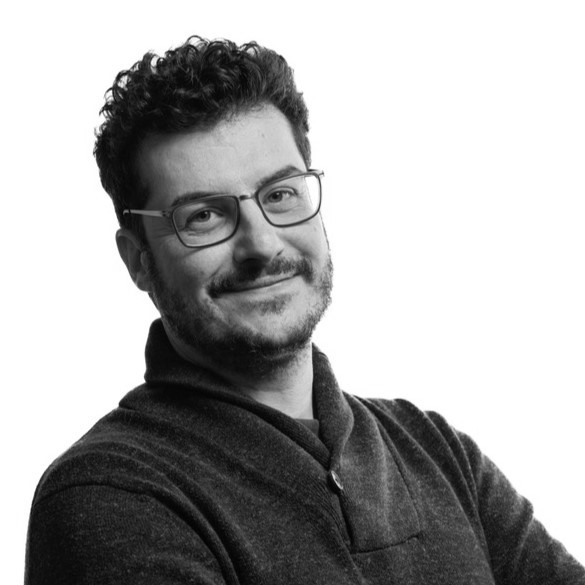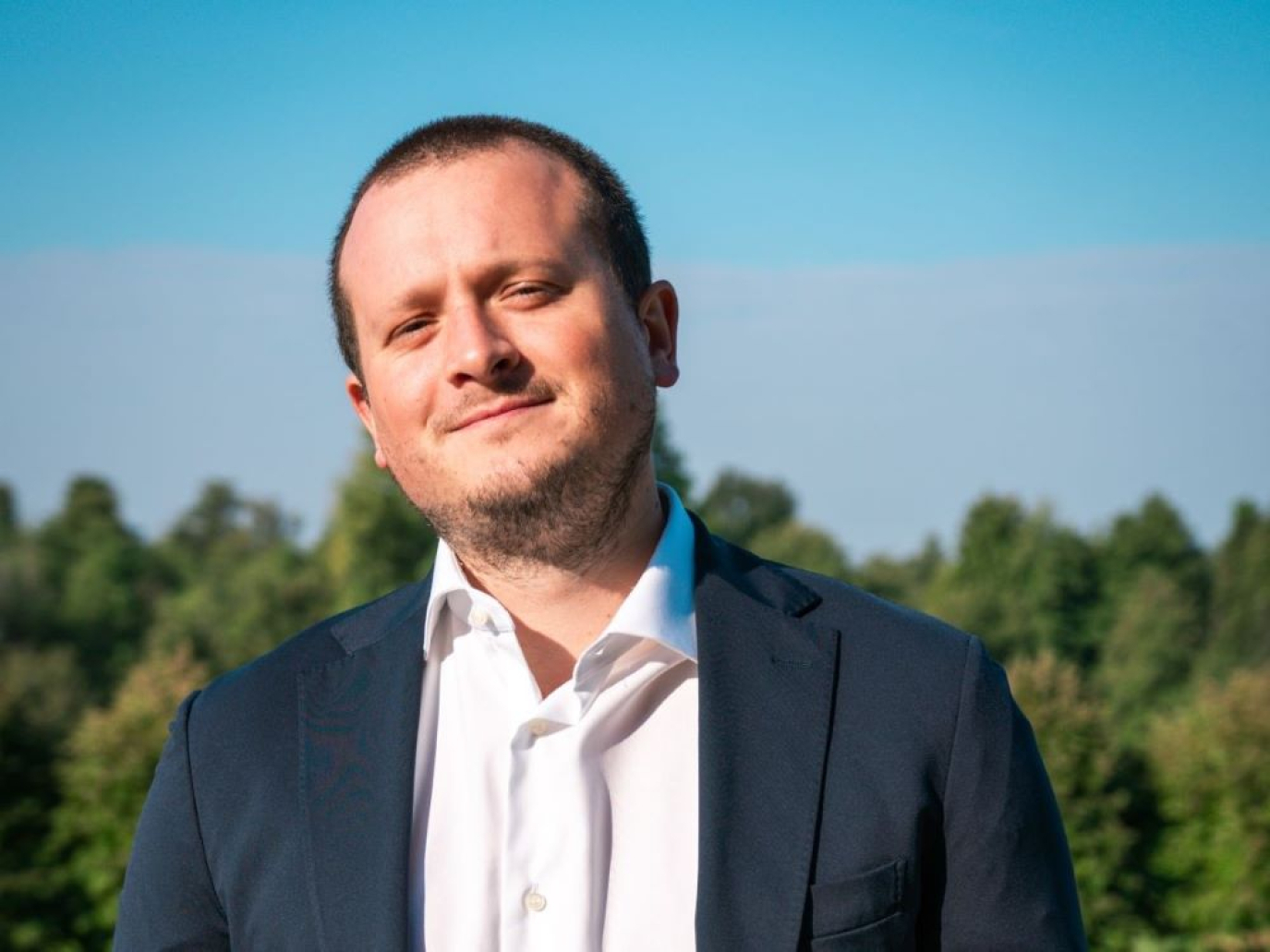This article is also available in Italian / Questo articolo è disponibile anche in italiano
The first step in protecting the planet's biodiversity is to have accurate, homogeneous data that is as reliable as possible. Then it will be possible to talk about solutions, at the level of companies, local authorities and nations. This is what 3Bee, the Italian nature tech company founded to monitor, protect and regenerate biodiversity using cutting-edge technologies, is working on: from satellite data to sensors in the field that pick up the hum of pollinators, from citizen science to DNA coding. Between platforms for companies and organisations, cutting-edge research and biodiversity policy, we had a long chat with 3Bee's founder and CEO, Niccolò Calandri.
What is 3Bee's mission?
Our mission has changed a lot since we started. Today, 3Bee's mission is to analyse the climate risks, impacts and dependencies of businesses, communities and nature parks on nature, climate and biodiversity.
What products do you offer to companies?
Our flagship product today is the 3Bee Environmental Platform for Climate, Biodiversity and Nature, an assessment, monitoring and regeneration platform. Every company now has a reporting obligation and a need to be resilient to extreme climate events. Our platform assigns a risk score that makes it possible to understand how resilient a company really is to climate change, how much it affects its territory and in what way. The second step is to use the data from the first assessment phase to develop a tailored climate and biodiversity strategy, in line with the main international reporting standards.
3Bee is a company capable of collecting and processing a lot of data. What role does quantitative information play in the decision-making process?
Data is essential. Before our monitoring platform, all these activities were carried out exclusively by consultants. The consultant – an agronomist, an ecologist, a scientist – goes out into the field to measure, survey and understand exactly what is happening at a particular point in the area. This is very geo-localised and, above all, very time-consuming. A survey can takes weeks or even months, so the cost to a company is significant. Our approach makes it possible to scale this process and reduce the cost. The more companies that use this technology, the more global the mapping of the problem or solution is. The starting point is the small company site and then moving to the community, the region and even the country to get a strategic planning of the target. With so much data, you can measure the problem more widely and come up with a more effective solution.
How much has IT contributed to your very rapid growth?
3Bee was born from the software part, from data analysis and satellites. We have a team of experts in environmental science, animal husbandry, agronomy and landscape architecture whose work is guided by our technology. Their decisions come first from data analysis, from which solutions are defined. That's the difference between a consultancy, which gives you a service but takes six months, and a product company. If you give me a GPS coordinate in the world and a perimeter, I can tell you the specific problem in half an hour and come up with a solution in two days. Then the solution has to be implemented, and that’s where nature's timing kicks in.
What kind of risks do you monitor?
Companies often have to deal with insurance companies, so they generally need an assessment of climate risk: flooding, hydrogeological risk, drought risk. For example, a company that produces soft drinks will be dependent on water, so it will need to know how much its dependence on nature is at risk. Or, if the company is located in the heart of the Po Valley, it needs to know the hydrogeological risk in order to intervene, if necessary, with artificial or natural barriers. On the other hand, when we talk about cities and towns, there are the risks to citizens, such as those related to heat islands. In Milan, for example, there are areas that are extremely overbuilt with concrete, creating very strong heat islands that become dangerous for the population, especially in summer. Or there is the risk of flooding, especially where the urban area is more impermeable because there is less green space. On the other hand, if we look at natural parks, the greatest need is to assess the risk of invasive species, to understand how they develop and, consequently, how to intervene.
From an international perspective, how relevant have international agreements on biodiversity been for you?
At the international level, the guidelines that have been given are different. We started at COP15, where the biodiversity framework set an initial target that was quite simple but very difficult to achieve: to restore 30% of what we have destroyed. The big problem is that it is a target without a policy, which means that countries are not implementing it. At European level, however, these policies are beginning to emerge. The CSRD Directive is currently the driving force behind 3Bee and has been implemented quite quickly by Italy. The CSRD introduces some new obligations, such as double materiality, but most importantly it talks directly about biodiversity. It talks about the obligation to monitor it and to know exactly whether a company's site is in a sensitive area: how many protected species there are, how many endangered areas, how many natural parks, how many key biodiversity areas, how rich in biodiversity that area is (not just in endangered species). Companies do not have this information today, but given the obligations put in place, they will have to start getting it through monitoring activities. So there are two alternatives: you can have a consultant physically go out and survey, analyse, process maps in six months at considerable cost and then provide an output; or you can have technology companies like 3Bee that aggregate data for companies, communities and nature parks that they provide it to. For us, CSRD is crucial because it puts real obligations on companies. It remains to be seen what new targets will come out from COP16.
What data gaps still need to be filled?
Currently, with the CSRD obligations, there is a bit of a data gap for everyone. MSA (Mean Species Abundance), calculated by comparing the abundance of species in an area with their abundance in a completely natural environment (unaffected by human activity), is the key scientific indicator that should be used. This indicator can be calculated using the GLOBIO standard recognised by the United Nations, but it is an estimate and therefore an indirect measure. Therefore, the biggest data gap to be filled concerns the possibility of carrying out a census of a given area with sufficient accuracy to be certain of the biodiversity present. This would mean taking a census of all the micro-organisms present from the ground up, then moving up one level and taking a census of, for example, amphibians and mammals, and expanding laterally to take a census of birds as well. This will be essential in order to move from an indirect measurement, which is currently done with more or less complicated techniques (e.g. using satellite data), to a direct measurement. In the future, this will be possible thanks to a platform such as that of 3Bee, which combines field observations with the Biodiversa app, DNA analysis in water or pollen, sound censuses using Spectrum technology and photo-trapping censuses.
From your R&D point of view, what are you working on now, if you can tell us?
We are pretty much an open book at the moment, so we have no particular secrets about what we are researching. We are doing a lot of work on satellite analysis, which is 90 per cent of our research at the moment. The aim is to use satellites to identify what is on the ground, what kind of plants, for example, for every single pixel of a forest. Based on this, we can define the land use of an area, which allows us to do the indirect measurement of MSA that I mentioned earlier. The second step will be to improve measurements in the field. At the moment, for example, we are counting pollinators with IoT sensors called Spectrum, real 'electronic ears' that pick up the vibrations – the buzz – that these insects emit during flight. We are also working on developing technologies that can record the whole sound part, such as the songs of birds or amphibians , so that we can extend our analysis and understand in more detail which species are present in a given study area. Finally, we want to go as far as using barcoding, or meta-barcoding, to identify as many species as possible from bee pollen or water from ponds and pools.
You have launched your own app, Biodiversa. What will it be used for?
The Biodiversa app was created with the aim of involving as many people as possible in our mission. At the moment we count plants by satellite, but the resolution is 10x10 metres. How can we get hyper-resolution? One option would be for Google to go around and take pictures of all our plants, but we don't have that kind of power yet. The other option is to involve people directly: by downloading the Biodiversa app, users can take pictures of plants wherever they are, send them to us and find out more about the species they are photographing. This may sound a bit boring. In reality, the game is the real driving force behind the scientific objective: the more you play, the more points you earn and the higher your ranking. At the moment there is also a competition with prizes, which allows users to win prizes according to their place in the ranking after registering. With this system, we are trying to get as many geolocated photos as possible, so that we can analyse biodiversity in a granular way over the whole territory. Biodiversa is currently present in Italy, Spain, Germany, France and Europe in general. In the four months since its launch, we have already collected half a million images. But our goal is to count 50 million plants in all the countries involved. But our goal is to count 50 million plants in all the countries involved. So now we need to increase the number of users: we have 10,000, of which 5,000 are active, but to reach the goal of 50 million plants analysed we need more support from people.
This content is produced thanks to the support of sponsors
Images: 3Bee



